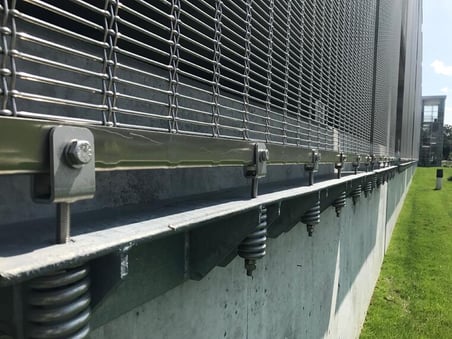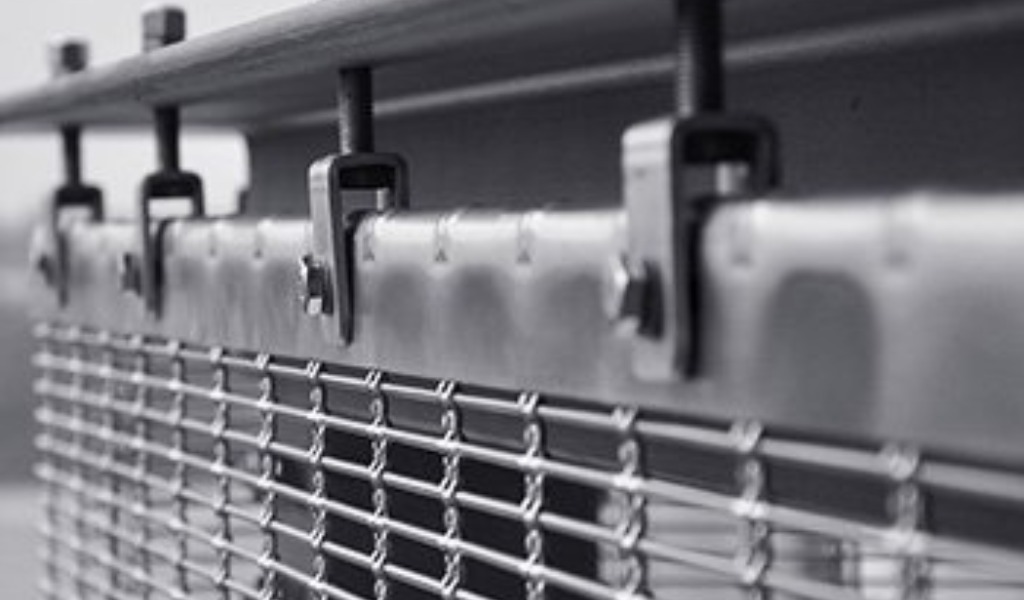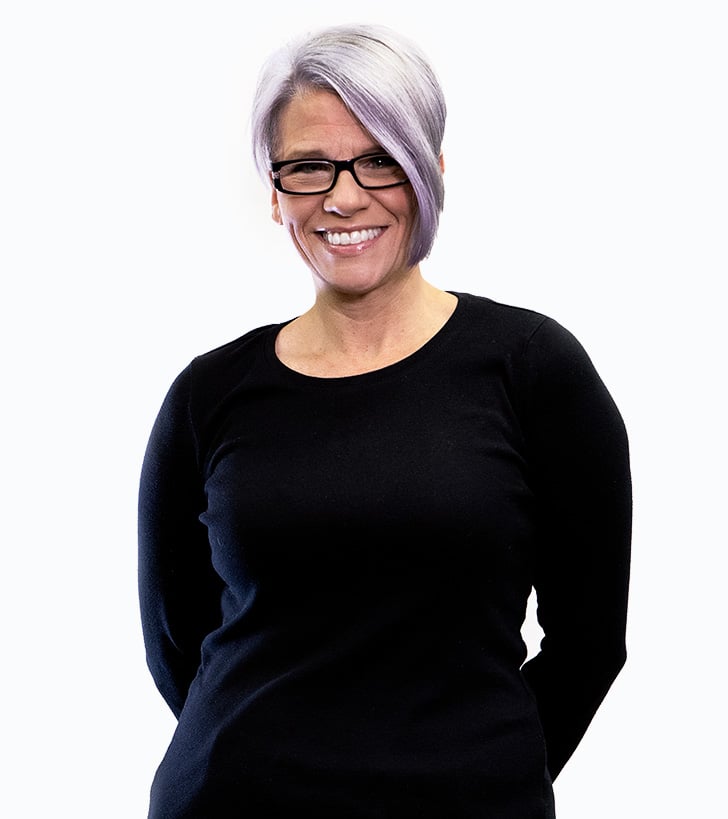Installing Architectural Mesh: Pre-drilling Substructural Mounting Holes
Architectural Mesh - Exterior | Architectural Mesh - Interior
So, you've decided that architectural wire mesh is the best possible solution to weave your design vision into reality. You've picked out the weave pattern, identified a suitable contractor, and are now ready to work out the installation logistics.
Now, while the installation process is pretty straightforward, there are things that can go wrong and delay the project's finish date. One of the most overlooked aspects of the installation process that can cause maddening setbacks is the process of pre-drilling mounting holes into the substructure of the mesh system.
W.S. Tyler has proudly supplied one-of-a-kind architectural mesh systems for over 20 years and understands how critical the installation process is to the success and longevity of architectural mesh applications. To support you and ensure a seamless installation, we wrote the following article to emphasize the importance of drilling mounting holes into your substructure before it is mounted to the main structure.
You will learn:
- What the substructure of an architectural mesh system is
- Why you should pre-drill mounting holes into your substructure
- The proper way to pre-drill substructural mounting holes
- The consequences of not mounting architectural mesh panels to your substructure properly
What Is Architectural Substructure?

The substructure is what the mesh panels get attached to. As they are critical to creating the required tension loads throughout an architectural mesh system, they are required for all systems.
Typically, they are galvanized 6" x 6" x ½" angles that will be drilled into the embed plates. That said, these angles are only needed at the top and bottom of every panel.
The Importance of Pre-Drilling Holes Into Your Substructure
To bring an architectural mesh into tension, the mounting hardware of the system must be bolted into several holes throughout the substructure. Because these holes must line up with the mesh panel mounting hardware exactly, these holes must be drilled in manually by the contractor.
It is not uncommon to see contractors attempt to drill the mounting holes after the substructure is attached to the building; however, it is recommended that these holes be drilled prior.
It's much easier to pre-drill the holes on the substructure on the ground than it is to drill the holes while the angles are attached to the building. This is particularly true when the substructure and architectural mesh system must be positioned into tight spaces with little to no wiggle room.
It's also less time-consuming and more accurate when done prior to installing the substructure.
How Can I Accurately Pre-drill the Holes in My Substructure?
Again, it is critical that the holes you drill into your substructure perfectly align with the mounting points on the architectural mesh panels. This will ensure your panels are mounted and tensioned properly, allowing them to provide all the beneficial qualities you expect.
To that end, when determining where to position your drill holes, you must look at the shop drawings of the project.
Your architectural mesh supplier should deliver detailed shop drawings that show exactly where the mounting points need to be for every panel. These drawings are what the installer will need to use on-site to accurately pre-drill the holes for mounting, specifically the clevis hardware.
What Are the Consequences of Not Properly Attaching Architectural Mesh to Your Substructure?
If the holes are not accurately drilled on the substructure per the approved drawings, the punched holes on the mesh panels will not line up with the holes on the substructure. This means the panel placement will be offset; the panels will either be too close to each other or too far apart.
If they are too close, you run the risk of the panels overlapping each other and damaging the panels. Too far apart, and you will see the larger gap in between the panels and not have a homogenized look across the entire elevation.
Keep Your Architectural Mesh System Grounded
The substructure of an architectural mesh system keeps your architectural wire mesh panels mounted to the structure you are designing or retrofitting. To ensure a uniform installation, it is best that you pre-drill any required mounting holes into your substructure before it is mounted, using your shop drawings as a guide.
If you are working with taller architectural mesh panels, your next step is to ensure you have the proper intermediate tubes in place. This will keep your mesh panels grounded, preventing them from swaying in the wind and causing an increased amount of stress on the substructure.
With over 20 years of architectural mesh experience under our belt, W.S. Tyler is here to help build your confidence in architectural mesh's ability to create a one-of-a-kind aesthetic that will stand the test of time.
To gain a more compressive understanding of what an architectural mesh intermediate tube is and how they work, read the article linked below:
About Wendy DeCapite
For over 17 years, Wendy has strived to educate both architects and contractors on the benefits architectural mesh delivers to the world of architectural design. As W.S. Tyler’s Architectural Products Marketing Specialist, she eagerly leads AIA presentations to help customers better understand how architectural mesh can be used to weave your vision into reality.




